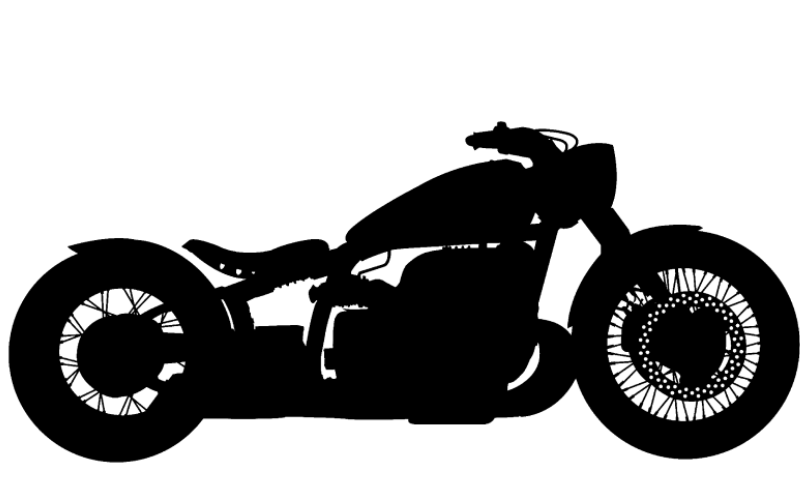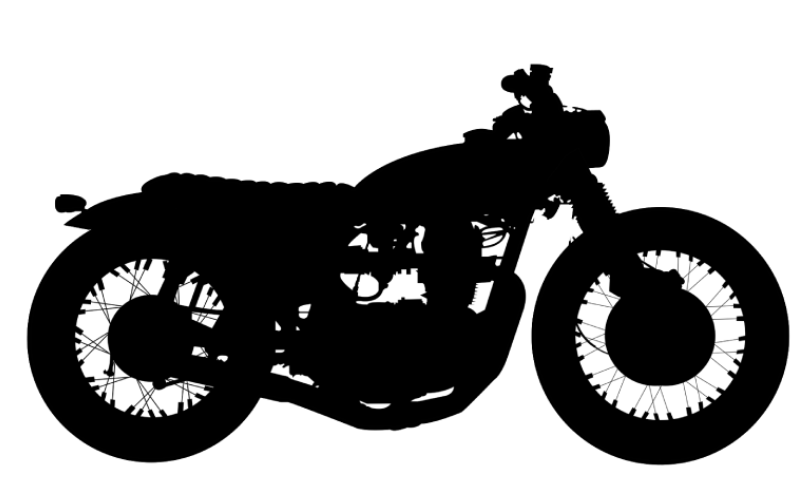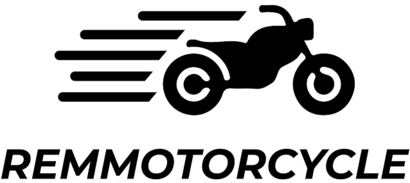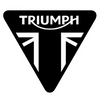SEARCH BY CATEGORIES
SEARCH BY INSPIRATIONS
- Air filters
- Brake & Clutch levers
- Electric box
- Exhaust
- Fenders
- Footpegs
- Front protections
- Front suspension
- Front suspension protections
- Fuel tanks
- Handle grips
- Handlebar
- Handlebar switch controls
- Headlights
- License plate holder
- Mirrors
- Mudguards
- Rear frame
- Suspensions
- Seats
- Silencers
- Speedometers
- Taillights
- Thermal strips
- Turn signals
- Air filters
- Belows front suspensions
- Brake & clutch levers
- Electric box
- Engine protection
- Exhaust
- Fenders
- Foot pegs
- Front suspensions
- Fuel tanks
- Handle grips
- Handlebar switch controls
- Handlebars
- Headlights
- License plate holder
- Mirrors
- Mudguards
- Rear frame
- Rear light
- Rear suspensions
- Seats
- Silencers
- Speedometers
- Thermal strips
- Turn signals
- Air filters
- Belows front suspensions
- Brake & Clutch levers
- Electric box
- Exhausts
- Fenders
- Foot pegs
- Front suspensions
- Fuel tanks
- Handle grips
- Handlebar switch controls
- Handlebars
- Headlights
- License plate holders
- Mirrors
- Mudguards
- Rear light
- Rear suspensions
- Seats
- Silencers
- Speedometers
- Thermal strips
- Turn signals
- Air filters
- Belows front suspension
- Brake & Clutch levers
- Electric box
- Exhaust
- Fenders
- Foot pegs
- Front protection
- Front suspensions
- Fuel tanks
- Handle grips
- Handlebar switch controls
- Handlebars
- Headlights
- License plate holders
- Mirrors
- Mudguards
- Rear frame
- Rear light
- Rear suspensions
- Seats
- Silencers
- Speedometers
- Thermal strips
- Turn signals
- Air filters
- Belows front suspensions
- Brake & Clutch levers
- Electric box
- Engine protection
- Exhausts
- Fenders
- Foot pegs
- Front suspensions
- Fuel tanks
- Handle grips
- Handlebar switch controls
- Handlebars
- Headlights
- License plate holders
- Mirrors
- Mudguards
- Rear frame
- Rear light
- Rear suspensions
- Seats
- Silencers
- Speedometers
- Thermal strips
- Turn signals

- Air filters
- Brake & Clutch levers
- Electric box
- Exhaust
- Fenders
- Footpegs
- Front protections
- Front suspension
- Front suspension protections
- Fuel tanks
- Handle grips
- Handlebar
- Handlebar switch controls
- Headlights
- License plate holder
- Mirrors
- Mudguards
- Rear frame
- Suspensions
- Seats
- Silencers
- Speedometers
- Taillights
- Thermal strips
- Turn signals

- Air filters
- Belows front suspensions
- Brake & clutch levers
- Electric box
- Engine protection
- Exhaust
- Fenders
- Foot pegs
- Front suspensions
- Fuel tanks
- Handle grips
- Handlebar switch controls
- Handlebars
- Headlights
- License plate holder
- Mirrors
- Mudguards
- Rear frame
- Rear light
- Rear suspensions
- Seats
- Silencers
- Speedometers
- Thermal strips
- Turn signals

- Air filters
- Belows front suspensions
- Brake & Clutch levers
- Electric box
- Exhausts
- Fenders
- Foot pegs
- Front suspensions
- Fuel tanks
- Handle grips
- Handlebar switch controls
- Handlebars
- Headlights
- License plate holders
- Mirrors
- Mudguards
- Rear light
- Rear suspensions
- Seats
- Silencers
- Speedometers
- Thermal strips
- Turn signals

- Air filters
- Belows front suspension
- Brake & Clutch levers
- Electric box
- Exhaust
- Fenders
- Foot pegs
- Front protection
- Front suspensions
- Fuel tanks
- Handle grips
- Handlebar switch controls
- Handlebars
- Headlights
- License plate holders
- Mirrors
- Mudguards
- Rear frame
- Rear light
- Rear suspensions
- Seats
- Silencers
- Speedometers
- Thermal strips
- Turn signals
- Air filters
- Belows front suspensions
- Brake & Clutch levers
- Electric box
- Engine protection
- Exhausts
- Fenders
- Foot pegs
- Front suspensions
- Fuel tanks
- Handle grips
- Handlebar switch controls
- Handlebars
- Headlights
- License plate holders
- Mirrors
- Mudguards
- Rear frame
- Rear light
- Rear suspensions
- Seats
- Silencers
- Speedometers
- Thermal strips
- Turn signals
PLUS DE MOTO
Add description, images, menus and links to your mega menu
A column with no settings can be used as a spacer
Link to your collections, sales and even external links
Add up to five columns
Add description, images, menus and links to your mega menu
A column with no settings can be used as a spacer
Link to your collections, sales and even external links
Add up to five columns
Add description, images, menus and links to your mega menu
A column with no settings can be used as a spacer
Link to your collections, sales and even external links
Add up to five columns
Add description, images, menus and links to your mega menu
A column with no settings can be used as a spacer
Link to your collections, sales and even external links
Add up to five columns
vintage motorcycle turn signals
No products found in this collection
Vintage motorcycle turn signals are an important safety feature that allows riders to indicate their intention to turn or change lanes to other drivers on the road.
Turn signals on vintage motorcycles are typically made up of a pair of lights, one located on the front and the other on the rear of the motorcycle, that flash in unison when the rider activates the turn signal switch.
Early vintage motorcycles did not come with turn signals, and riders had to use hand signals to indicate their intentions to other drivers.
In the United States, turn signals were not required by law until the mid-1960s, so many vintage motorcycles do not have them installed.
Modern turn signals on motorcycles are typically powered by the motorcycle's electrical system and use incandescent bulbs or LEDs to produce the flashing light.
However, vintage motorcycles may use different types of turn signals depending on the age and model of the motorcycle.
Overall, vintage motorcycle turn signals are an important safety feature that helps to improve the visibility of the motorcycle and prevent accidents on the road.
If your vintage motorcycle does not have turn signals, it is important to consider adding them as an aftermarket upgrade for improved safety.
Why change turn signal on vintage motorcycle ?
There are several reasons why you might consider changing the turn signals on your vintage motorcycle:
- Improved safety: Upgrading the turn signals on your vintage motorcycle can improve your visibility to other drivers on the road, reducing the risk of accidents. Newer turn signals may also be brighter and more visible in different lighting conditions.
- Better functionality: Vintage motorcycles may have turn signals that are difficult to use or have limited functionality. Upgrading to newer turn signals can provide additional features like self-cancelling signals or integrated running lights.
- Aesthetics: Changing the turn signals on your vintage motorcycle can also be a cosmetic upgrade, providing a more modern look or fitting in better with the style of your motorcycle.
- Legal compliance: Depending on where you live, your vintage motorcycle may be required to have certain types of turn signals to comply with local laws. Upgrading to newer turn signals can ensure that you are compliant with these regulations.
When considering changing the turn signals on your vintage motorcycle, it is important to choose replacements that are compatible with the electrical system of your motorcycle and that fit properly in the existing mounting locations.
You may also want to consider the style and design of the turn signals to ensure that they fit the aesthetic of your vintage motorcycle.
How many models of vintage turn signal ?
There were many different models of turn signals used on vintage motorcycles over the years, and the specific type of turn signal used often depended on the manufacturer and model of the motorcycle.
Some common types of vintage turn signals include:
- Bullet-style turn signals: These turn signals are typically small and cylindrical in shape, with a rounded lens and a chrome or black finish. They were commonly used on Harley-Davidson motorcycles and other American-made motorcycles from the 1950s and 1960s.
- Teardrop-style turn signals: These turn signals are shaped like a teardrop, with a rounded lens and a chrome or black finish. They were commonly used on British-made motorcycles from the 1950s and 1960s, including Triumph and BSA motorcycles.
- Square-style turn signals: These turn signals have a square or rectangular shape, with a flat lens and a chrome or black finish. They were commonly used on Japanese-made motorcycles from the 1970s and 1980s, including Honda, Kawasaki, and Suzuki motorcycles.
- Stalk-style turn signals: These turn signals have a long, thin stalk that extends from the mounting bracket, with a small lens at the end. They were commonly used on European-made motorcycles from the 1970s and 1980s, including BMW and Ducati motorcycles.
Overall, the type of turn signal used on a vintage motorcycle may vary depending on the make and model of the motorcycle, as well as the time period in which it was manufactured.
How to instal turn signal ?
Installing turn signals on a vintage motorcycle can vary depending on the specific make and model of the motorcycle, as well as the type of turn signals being installed.
However, here are some general steps to follow:
- Choose the right turn signals: Make sure that the turn signals you are installing are compatible with the electrical system of your motorcycle, and that they fit properly in the existing mounting locations.
- Remove the old turn signals: If your motorcycle already has turn signals installed, you will need to remove them first. This may involve removing screws, nuts, or bolts that hold the turn signals in place, as well as disconnecting the wiring that powers them.
- Install the new turn signals: Mount the new turn signals in the same locations as the old ones, using screws, nuts, or bolts to secure them in place. Connect the wiring for the turn signals, making sure to match the correct wires and using wire connectors to make secure connections.
- Test the turn signals: Turn on the motorcycle and test the turn signals to make sure they are working properly. If the turn signals are not flashing or are flashing too quickly, you may need to install a load equalizer to balance the electrical load on the motorcycle.
- Make adjustments: If necessary, adjust the angle or position of the turn signals to ensure that they are visible to other drivers on the road.
It is important to follow the instructions provided with your specific turn signals and to refer to a repair manual or seek professional help if you are not comfortable with electrical wiring or mechanical work.
How choose vintage turn signal ?
When choosing vintage turn signals for your motorcycle, there are a few factors to consider:
- Compatibility: Make sure that the turn signals you choose are compatible with the electrical system of your motorcycle. Some turn signals may require additional wiring or modifications to work properly.
- Mounting location: Vintage motorcycles may have limited space for mounting turn signals, so it is important to choose turn signals that fit properly in the existing mounting locations.
- Style: Vintage turn signals come in a variety of styles and designs, so consider the overall look of your motorcycle and choose turn signals that fit with the aesthetic.
- Brightness: Newer turn signals may be brighter and more visible than vintage turn signals, so consider the level of visibility you need for safe riding.
- Legal requirements: Depending on where you live, there may be legal requirements for the type of turn signals you can use on your motorcycle. Check local laws and regulations to ensure that the turn signals you choose are compliant.
- Condition: If you are purchasing vintage turn signals from a third-party seller, make sure to check the condition of the turn signals and ensure that they are in working order before making a purchase.
Overall, choosing the right vintage turn signals for your motorcycle will depend on a combination of practical considerations and personal preferences.
It may be helpful to consult with a knowledgeable mechanic or motorcycle enthusiast to get advice on specific brands and models that work well with your motorcycle.
How many do I put on my vintage motorbike ?
The number of turn signals that you need to install on your vintage motorbike depends on the legal requirements of the country or state where you ride.
In general, most countries require at least two turn signals, one on the left and one on the right side of the motorcycle.
Some countries may also require additional turn signals on the front or back of the motorcycle, or on the sides of the motorcycle if it has a sidecar.
It is important to check local laws and regulations to determine the specific requirements for turn signals on your vintage motorbike.
If you are unsure, consult with a local mechanic or motorcycle enthusiast who is familiar with the legal requirements in your area.
Can I instal LED turn signal on my vintage motorbike ?
Yes, you can install LED turn signals on your vintage motorbike, and there are several advantages to doing so.
LED turn signals are brighter than traditional incandescent bulbs, making them more visible to other drivers on the road. They also use less power and last longer than traditional bulbs, making them a more efficient and cost-effective option.
However, if you are replacing traditional turn signals with LED ones, you may need to install a load equalizer to balance the electrical load on your motorcycle.
This is because LED turn signals use less power than traditional bulbs, which can cause the turn signals to flash too quickly or not at all without a load equalizer.
It is also important to ensure that the LED turn signals you choose are compatible with the electrical system of your motorcycle and that they fit properly in the existing mounting locations.
It is recommended to consult a repair manual or seek professional help if you are not comfortable with electrical wiring or mechanical work.
Which color of turn signal light ?
The color of the turn signal light on a motorcycle depends on the country or state where you ride, as well as the legal requirements for turn signals in that location.
In most countries, turn signal lights are required to be amber or yellow in color. This is because amber/yellow is the most visible color for turn signals and is recognized as the standard color for indicating a turn or lane change.
In some countries, such as the United States, white turn signals are also allowed, but they must be used in conjunction with amber or yellow turn signals.
It is important to check local laws and regulations to determine the specific requirements for turn signal colors in your area.
If you are unsure, consult with a local mechanic or motorcycle enthusiast who is familiar with the legal requirements in your area.
In conclusion, vintage turn signals are an important safety feature on a vintage motorcycle, allowing riders to signal their intention to turn or change lanes.
When choosing turn signals for your motorcycle, it is important to consider factors such as compatibility with your electrical system, mounting location, style, brightness, legal requirements, and condition.
Additionally, you may choose to install LED turn signals, which are brighter and more efficient than traditional bulbs, but require a load equalizer to balance the electrical load.
The color of the turn signal light will depend on the legal requirements in your country or state, with most countries requiring amber or yellow turn signals.
It is important to check local laws and regulations to ensure that your turn signals are compliant and properly installed for safe riding.











